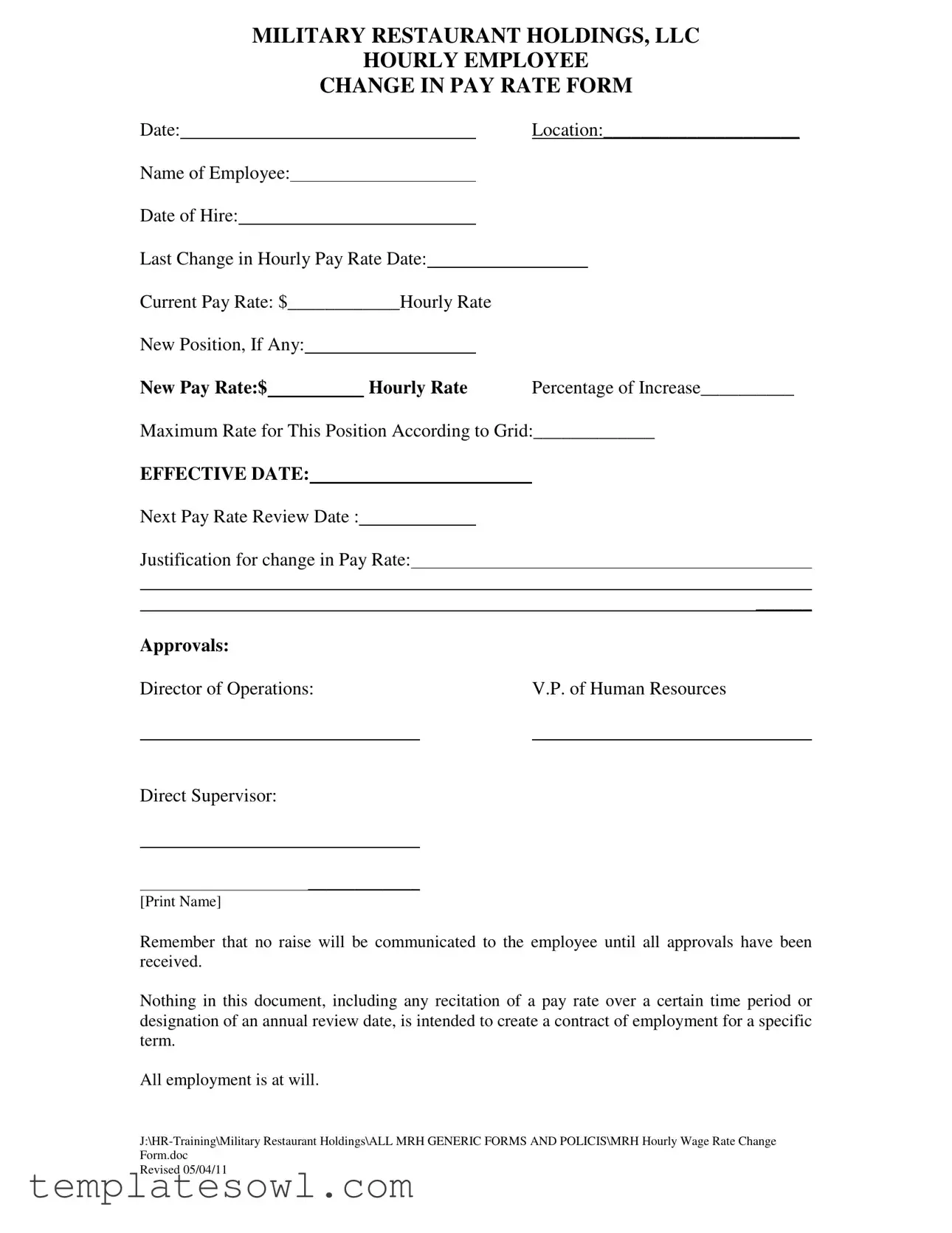Filling out the Change Pay Rate form may seem straightforward, but there are several common mistakes that can complicate the process. Understanding these errors can help ensure accuracy and clarity. This is particularly important because any inaccuracies may delay or complicate the intended changes.
One frequent mistake is failing to provide a specific location on the form. By omitting the location, it becomes challenging to ascertain where the employee works, which can lead to confusion during the approval process. Each workplace may have different pay structures and policies, so this detail is crucial.
Another common oversight is not including the full name of the employee. Simply writing 'John' instead of 'John Smith' may cause delays in documentation and communication. The complete name helps avoid any potential mix-ups with employees who may have similar names.
Many individuals also forget to specify the effective date of the pay change. Without this key detail, it can be unclear when the new rate is intended to take effect, leading to potential payroll issues. Moreover, clarity on the effective date allows employees to anticipate changes in their paychecks more accurately.
Not providing a clear justification for the change in pay rate is another common issue. This section is essential for maintaining transparency and justifying the increase or change. Failing to include an explanation not only affects approval but can also lead to questions about the rationale behind the pay adjustment.
Additionally, many people overlook the importance of including the maximum rate for the position according to the pay grid. This oversight can lead to discrepancies later on, especially if the new pay rate exceeds the established limits without appropriate justification.
In some cases, individuals neglect to gather necessary approvals before finalizing the form. Without the signatures from the Director of Operations, Human Resources, and Direct Supervisor, the raise will not be communicated to the employee. This delay can be frustrating for employees awaiting notification.
Another mistake often observed is not indicating the previous pay rate clearly. This information allows for easy comparison and review of the proposed change. If the prior rate is left out, it becomes harder for approvers to evaluate the fairness and appropriateness of the change.
Errors in calculating the percentage of increase also occur frequently. A simple miscalculation can lead to significant financial discrepancies. It's essential to double-check calculations before finalizing the form to prevent confusion and dissatisfaction later.
Lastly, not adhering to submission protocols can hinder the approval process. Familiarizing oneself with how and where to submit the form ensures that it reaches the right individuals promptly, preventing unnecessary delays.
By being mindful of these common mistakes when filling out the Change Pay Rate form, individuals can ensure a smoother process. Clarity, accuracy, and attention to detail are paramount for efficient pay adjustments.

